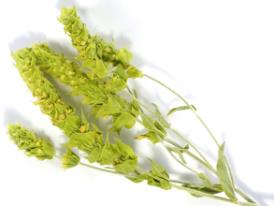
Atanas Vasiliev
Joint Institute for Nuclear Research, Russia
Title: Determination of elemental content of four Bulgarian medicinal plants by means of instrumental neutron activation analysis
Biography
Biography: Atanas Vasiliev
Abstract
Statement of the Problem: Medicinal plants play a major role both in traditional and conventional medicine due to their natural abundance and variety of beneficial health effects. The wide use of plants brings up a necessity to understand their composition and evaluate the risks and benefits of consumption. Most of the studies dealing with medicinal plants are focused on complex constitutes such as antioxidants, enzymes, volatile oils and others. Unfortunately this trend of research leads to a lack of information regarding the elemental content of the medicinal plants. Elemental content could be crucial in order to understand the health effects of the plants. This is due to the potential presence of two groups of elements: essential elements and toxic elements. Essential elements play a major role in human physiology and must be obtained by diet. The presence of toxic elements, on the other hand, might be hazardous to the consumer and lead to health problems.
The purpose of this Study: In the present work the elemental content of four widely used Bulgarian medicinal plants was studied in order to fill the aforementioned informational gap.
Methodology & Theoretical Orientation: The elemental content of four Bulgarian medicinal plants (Sanguisorba officialis L., Sideritis scardic Griseb, Chamaenerium angustifoliu L., and Tribulus terestris L.) was studied by means of instrumental neutron activation analysis. The studied plants are widely used in traditional Bulgarian medicine and have been reported to display healing properties. Previous information for their elemental composition is scarce.
Findings: The mass fractions of twenty eight elements (Al, As, Au, Ba, Br, Ca, Cd, Cl, Co, Cs, Fe, K, La, Mg, Mn, Mo, Na, Rb, S, Sb, Sc, Sr, Sm, Th, U, V, W, Zn) were determined.
Conclusion & Significance: Among those elements thirteen dietary minerals (Ca, Cl, Co, Fe, K, Mg, Mn, Mo, Na, Ni, S, V, Zn) and four toxic (As, Ba, Cd, Sb) were detected.

Recent Publications:
- Frontasyeva M.V. (2011) Neutron activation analysis for the Life Sciences. A review. Physics of Particles and Nuclei 42(2): 332-378.
- Baljinnyam N., Tsevegsuren N., Jugder B., Frontasyeva M.V., Pavlov S.S. (2014) Investigation of elemental content of some Mongolian medicinal plants. International Journal of Medicinal Plants. Photon, 106: 481-492 (IF 3.12).
- Arnason J.T., Mata R. (2013) "Phytochemistry of Medicinal Plants". Springer Science & Business Medi
- Bogden John Klevay, Leslie M. (2000) Clinical nutrition of the essential trace elements and minerals: the guide for health professionals. Springer Science + Business Media New York.
- Lamari, Z., Larbi, R. & Negache, H. (2016) Trace element content of Zingiber officinalis and Salvia officinalis medicinal plants from Algeria. J Radioanal Nucl Chem 309(1): 17-22.

